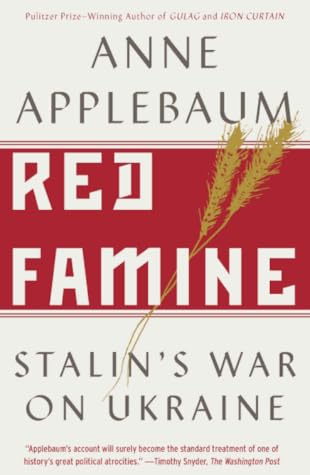More on this book
Community
Kindle Notes & Highlights
Fear became our constant companion: it was an awesome dread of standing helplessly and hopelessly alone before the monstrous power of the State.”
by the late spring and summer, cannibalism was widespread. Even more extraordinarily, its existence was no secret, not in Kharkiv, Kyiv, or Moscow.
Even in the cities, people repeated stories of children being hunted down as food. Sergio Gradenigo, the Italian consul, reported that in Kharkiv parents all brought their children personally to school, and accompanied them at all times, out of fear that starving people were hunting them: “Children of party leaders and OGPU are especially targeted because they have better clothes than other children. Trade of human meat becomes more active.”
Stories of cannibalism were known to the Ukrainian leadership, and to the Moscow leadership too. Kaganovich was, as noted, certainly informed; a Ukrainian Central Committee working group responsible for the spring sowing campaign in 1933 reported back to the party that their work was especially difficult in regions with “cannibalism” and “homeless children.”122 The OGPU continued to report cases of cannibalism well into 1934.123 But if either Kharkiv or Moscow ever provided instructions on how to deal with cannibalism, or ever reflected more deeply on its causes, they haven’t yet been
...more
But the real reason why the cities were less desperate was rationing: workers and bureaucrats received food coupons. These were not available to everybody. According to a 1931 law, all Soviet citizens who worked for the state sector received ration cards. That left out peasants; it also omitted others without formal jobs. In addition, the size of rations was based not only on the importance of the worker, but also of his workplace. Priority went to key industrial regions, and the only one in Ukraine was Donbas. In practice, some 40 per cent of the Ukrainian population therefore received about
...more
Better-quality food was available in the government canteens attached to every workplace: soups, kasha, occasionally meat.
paradoxically, the most important source of help for the starving came from Soviet bureaucrats and Soviet bureaucracies. The historian Timothy Snyder has described how state institutions in Nazi-occupied Europe, when they were still functioning, could rescue Jews from the Holocaust, and a parallel story can be told about Stalin’s Soviet Union.39 While the Bolsheviks had systematically destroyed independent institutions, including churches, charities and private companies, state institutions remained—schools, hospitals, orphanages—and some of them were in a position to help. Some of them,
...more
In later years all such foreign contacts were forbidden and would be dangerous, even lethal, to maintain. But in 1932–3 the regime’s desire for hard currency was such that it allowed people outside the USSR to send “food transfers” to starving relatives via the shops.71 Those lucky enough to receive something would have to give the state 25 per cent of the total, and sometimes as much as 50 per cent. But they would then receive coupons that allowed them to buy food at the Torgsin. Transfers arrived from Germany, Poland, Lithuania, France, the United Kingdom and above all the United States.72
...more
Although mortality statistics were recorded as accurately as possible in 1933, the authorities, as the next chapter will explain, later altered death registries across Ukraine to hide the numbers of deaths from starvation, and in 1937 scrapped an entire census because of what it revealed.
For all of these reasons, estimates of the numbers of dead have in the past ranged widely, from a few tens of thousands to 2 million, 7 million or even 10 million. But in recent years a team of Ukrainian demographers have looked again at the numbers that were tabulated at the district and provincial level, then passed on to Kharkiv and Moscow, and have come up with better answers.2 Arguing that “there was some falsification of cause of death in death certificates, but the number of registered deaths was not tampered with,” they have sought to establish reliable numbers of “excess deaths,”
...more
The total population of the republic at that time was about 31 million people. The direct losses amounted to about 13 per cent of that number.4 The vast majority of casualties were in the countryside: of the 3.9 million excess deaths, 3.5 million were rural and 400,000 urban. More than 90 per cent of the deaths took place in 1933, and most of those in the first half of the year, with the highest numbers of casualties in May, June and July.
For those born in 1933, the numbers are even starker. Females born in Ukraine in that year lived, on average, to be eight years old. Males born in 1933 could expect to live to the age of five.6 These extreme statistics reflect, simply, the very high death rates in that year of children.


